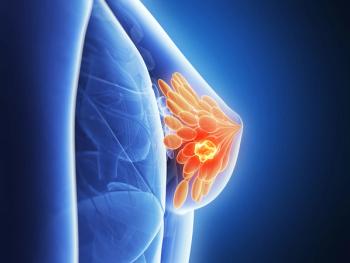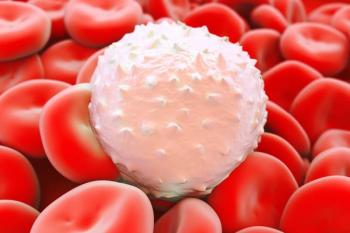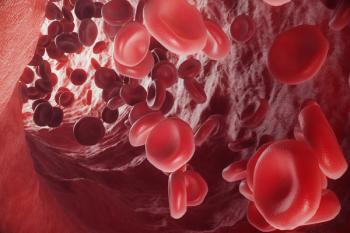
- ONCOLOGY Vol 12 No 7
- Volume 12
- Issue 7
New Gene Therapy Produces Marked Regression of Tumors in Animals
Scientists at Ohio University Edison Biotechnology Institute have used a nonviral gene expression system, invented and patented by Ohio University several years ago, to eliminate human cancer cells in animals. The investigators reported achieving
Scientists at Ohio University Edison Biotechnology Institute have used a nonviral gene expression system, invented and patented by Ohio University several years ago, to eliminate human cancer cells in animals. The investigators reported achieving a 60% tumor regression rate with this system without the potential dangers usually associated with conventional viral gene therapy techniques.
The universitys scientists are collaborating on the project with Progenitor Inc., a California-based biotechnology company that has licensed the T7 gene expression system used in the studies. If further tests of the method prove as successful as early studies, human trials could begin in the next year or two.
Nonviral Gene Therapy Vector
The same gene therapy protocol was employed widely in the research of human cancer in animal models. Cellular expression of a herpes simplex virus-thymidine kinase (HSV-TK) gene was stimulated in tumors, and then tumor-bearing animals were treated with ganciclovir (Cytovene). This approach resulted in permanent elimination of 30% of the tumors.
While similar tests of the HSV-TK/ganciclovir protocol have suggested that it effectively kills cancer cells, previous studies used viral vectors to deliver the HSV-TK gene to the cells. Since viral vectors are not transient, the potential exists for viruses to infect healthy cells and cause mutations that could become part of the genome. Accordingly, scientists have been looking for a nonviral delivery system to use with gene therapy treatments, says Xiao Chen, PhD, lead author of the study and an assistant professor of clinical research at Ohio Universitys Edison Biotechnology Institute and College of Osteopathic Medicine.
The work was published in a March 1998 issue of Human Gene Therapy.
"Viral gene therapy vectors are very efficient in delivery of therapeutic genes to targeted cells, but there are safety concerns associated with the viral vectors," says Dr. Chen. "Results of our studies of the T7 system suggest that it may be useful as an alternative to viral vectors for cancer therapy and other transient gene therapies or in biologic applications that require temporary but rapid and efficient gene expression."
Benefits of T7 Gene Therapy
Ohio University scientists have long suspected that the T7 gene expression system would produce tumor reduction rates similar to those achieved with viral vectors. These new studies confirm that suspicion, says Thomas Wagner, PhD, distinguished professor of molecular and cellular biology at Ohio University and principal investigator of the T7 project at Edison Biotechnology Institute. The benefit to using T7 for gene therapy, says Dr. Wagner, is that the genes expressed via this method are transient and do not become part of the cells chromosomes. Also, T7 allows genes to be expressed outside of the nucleus of a cell, which means that it can be used on cells that are not dividing.
"We think this is why we had such positive results of total and permanent regression of the tumors we studied," says Dr. Wagner. "While most cancer cells are dividing, oncologists tell us that in the core of many tumors there are large populations of nondividing cells. These cells may be the source of the recurrence of the cancer."
The T7 system, however, allowed expression of the HSV-TK gene in all cells in the tumor, even those that were not dividing. The high level of gene expression, another benefit to the T7 system, is due to its design, says Dr. Wagner. While other gene therapy techniques use only DNA genetic material, the T7 method uses DNA prebound with T7 RNA polymerase--a protein that causes the gene to begin producing RNA immediately--an important step in protein synthesis within a cell.
Enhancing the Gene Expression System
At Progenitor Inc, scientists are conducting animal studies with T7 to measure its effectiveness on brain and skin cancers. While these studies have been successful, the scientists are also trying to improve efficiency of the technology for commercial purposes, says Ralph Snodgrass,PhD, coauthor of the study and vice-president of research and chief scientific officer at Progenitor.
Clinical trials will likely be conducted sometime in the future, but before trials can begin, scientists want to enhance the expression system to allow for a higher rate of tumor regression. In some mice, tumor regression was partial and in others it was complete. Dr. Snodgrass believes that the problem may lie in the way that the DNA is delivered to the tumor cells.
"In some tumors, you might only need gene expression in 10% of the cells to be effective. But in other tumors, you might need expression in 25% of the cells," he says. "Some cells take up the DNA very easily but others may need some help." The possibility of using different lipids or other molecules to improve the delivery efficiency and consistency of the T7 system is also being investigated.
It is suggested that when clinical trials do begin, the following therapeutic strategy might be employed. First, physicians would perform a computed tomographic (CT) scan of the tumor to identify its exact location. Next, an automated injection system would introduce the T7 protein package into every segment of the tumor. Drs. Chen and Wagner have found that a series of injections increases tumor regression, so the patient would likely require several rounds of this therapy.
Once the HSV/TK genes began to express in the cell, the patient would receive intravenous doses of ganciclovir. Tumor regression should become evident in a matter of days, says Dr. Snodgrass. Unlike chemotherapy, which is not selective in the cells it kills, genetic therapy could potentially destroy only the diseased cells.
Articles in this issue
over 27 years ago
Expertise of Genetic Counselors Clarifiedover 27 years ago
Cryotherapy for Liver Tumorsover 27 years ago
Update: HIV Counseling and Testing Using Rapid Tests--U.S., 1995over 27 years ago
3D Structure of Tumor-Suppressor Protein Generated on the ComputerNewsletter
Stay up to date on recent advances in the multidisciplinary approach to cancer.

















































































